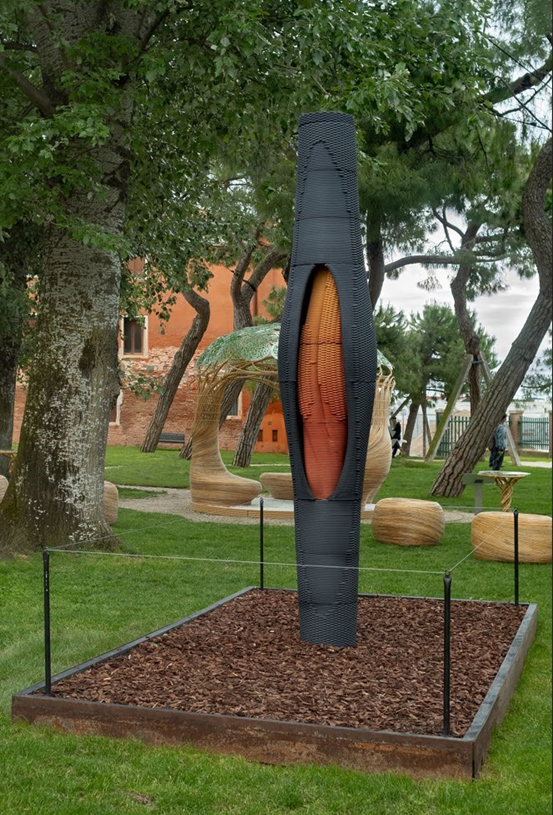
Mumbai – Inorganic pigments from Lanxess open up new design options in 3D concrete printing. A current example is the concrete sculpture “Duality of the skin and core”, which was designed using red and black iron oxide pigments. It is currently indicated in the “Zeit. Space. Existence”. Exhibition in the Biennale of Venice Architecture. Assistant professor Cristina Nan and architect Mattia Zucco from the Department of the Built Environment at Eindhoven University of Technology developed the concrete sculpture as an architectural experiment. The modular column was realized in collaboration with Lanxess and the Dutch 3D printing specialist Vertico.
The project shows how color, computer -generated patterns and material performance can be integrated into digitally controlled manufacturing processes. This opens up new aesthetic and constructive approaches for tomorrow's architecture.
Innovative design and materiality in 3D concrete printing
“Duality of the skin and core” changes the classic architectural column again. A slit-like opening in the cladding shows the colored interior daher the name. So far, a monolithic, gray aesthetics have dominated comparable applications. The innovative design and manufacturing strategy significantly expands the possibilities of 3D printing with concrete. Instead of printing components in a single pass, the project is pursuing a modular strategy. Inspired by ancient Greek and Roman columns, the work of art consists of nine drums and four wings. Every single element weighs less than 30 kilograms. This principle makes transport easier, enables flexible assembly, disassembly and reuse and thus expands the life cycle of the components – an important contribution to sustainable design and circular design principles.
Lanxess as a driver for innovation in 3D concrete printing
In order to secure the potential of colored concrete in 3D printing, not only with regard to the design, but also in terms of technology, Lanxess, in cooperation with partners such as the Institute for Building Materials at the Technical University of Dresden, carries out the properties of its pigments under additive production conditions. In the context of joint investigations, the partners analyzed how BayFerrox and Colortherm pigments behave in the 3D concrete pressure. The results show that the pigments do not affect the concrete properties and at the same time enable high color quality and consistency. They can therefore be used without restriction for the individual coloring of the mostly gray material in 3D printing.